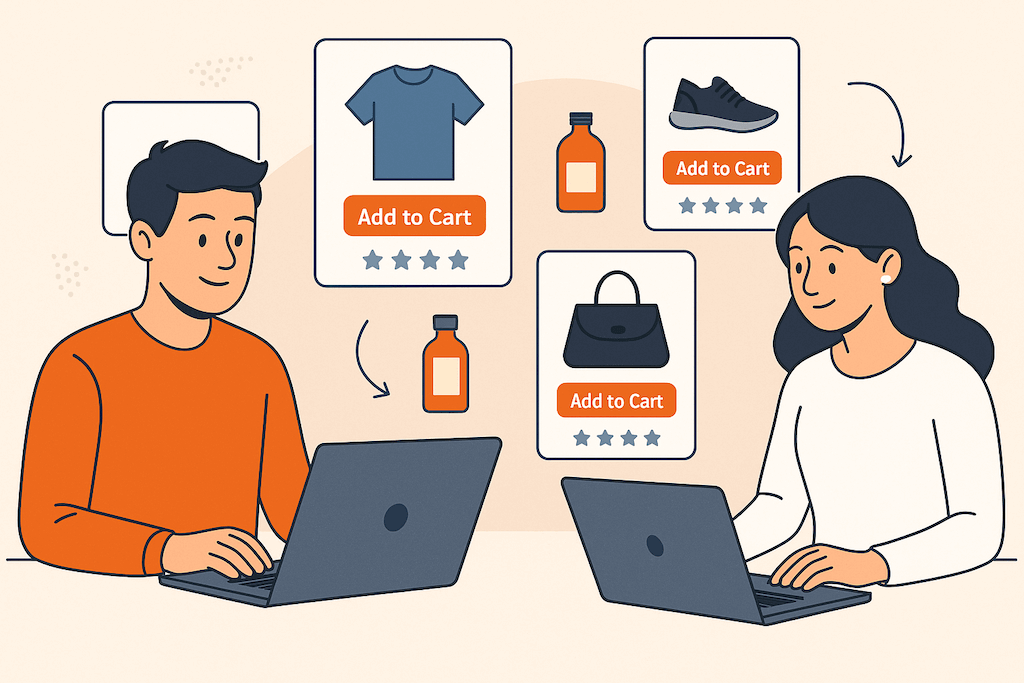Optimizing an eCommerce product page isn’t just about enhancing the visual appeal; it’s a multifaceted approach that blends art and science. It involves crafting compelling content, ensuring a seamless user experience, embracing the power of SEO, and continuously adapting to the changing digital landscape. Whether you’re launching a new eCommerce venture or looking to revamp your existing online store, this guide will provide you with the insights and strategies needed to maximize the potential of your product pages.
So, let’s embark on this journey of discovery and learn how to transform your product pages into magnets that attract, engage, and convert customers in the competitive world of eCommerce.
Optimizing Product Pages for SEO and Sales
Your product pages are the foundation of your eCommerce business. Ensuring they are well-optimized for both search engines and user experience is paramount. Here’s how to do it:
1. Keyword Research and Integration
- Keyword eCommerce Strategy: Conduct thorough keyword research to identify relevant keywords for each product. Focus on long-tail keywords, and integrate them naturally into product titles, descriptions, and meta tags.
- Competitive Analysis: Analyze competitors’ product pages to discover keyword opportunities and trends that can inform your SEO strategy.
2. High-Quality, Original Content
- Engaging eCommerce Descriptions: Craft compelling, informative, and keyword-rich product descriptions. These descriptions should not only cater to SEO but also resonate with your customers by highlighting the value and benefits of the product.
- Avoid Duplicate Content: To prevent SEO issues, create original content for each product, avoiding duplicate product descriptions that may be used across multiple items.
3. On-Page SEO Optimization
- Meta Tags: Optimize meta titles and descriptions with engaging, keyword-focused content that entices users to click through.
- Image Alt Text: Use descriptive alt text for product images to enhance accessibility and further improve SEO.
4. Mobile Optimization
- Responsive Design: Ensure your product pages are responsive and mobile-friendly. Google and other search engines prioritize mobile-friendly sites in search rankings.
- Fast Loading Times: Optimize images and streamline your website for faster loading times on mobile devices, as site speed is a crucial SEO ranking factor.
5. User Experience (UX) and Conversion Rate Optimization (CRO)
- User-Friendly Design: Prioritize a user-friendly design that simplifies navigation and enhances user experience. Implement clear calls-to-action (CTAs) to guide visitors towards a purchase.
- A/B Testing: Continuously conduct A/B testing to experiment with different layouts, images, and content to discover the most effective design for both SEO and conversion optimization.
Optimizing Your Entire eCommerce Business for SEO and Sales
Beyond individual product pages, the optimization of your entire eCommerce business plays a pivotal role in SEO and sales improvement. Here’s how to take your optimization efforts to the next level:
1. Data-Driven Decisions
- Web Analytics: Leverage web analytics tools to gather insights into customer behavior. Analyze this data to make informed decisions regarding site structure, content, and marketing efforts.
- Conversion Rate Optimization (CRO): Implement A/B testing and CRO techniques to improve the performance of your entire website, from product pages to the checkout process.
2. Customer Support and Engagement
- Live Chat: Offer live chat support to address customer inquiries and provide real-time assistance, enhancing user experience and boosting sales.
- Email Marketing: Utilize email marketing to engage with customers, share product updates, and offer exclusive promotions, encouraging repeat sales.
3. Inventory Management and Forecasting
- Inventory Optimization: Implement robust inventory management systems to prevent overstocking or running out of popular products.
- Demand Forecasting: Use demand forecasting techniques to ensure your eCommerce business has the right products in stock, especially during peak seasons.
4. Shipping and Fulfillment
- Fast and Reliable Shipping: Partner with dependable shipping providers to offer fast and secure delivery options, enhancing customer satisfaction and repeat sales.
- Clear Shipping Information: Provide transparent shipping information and tracking options to keep customers informed and reduce cart abandonment.
The Symbiosis of SEO and Sales Growth
It’s essential to understand that SEO and sales are not isolated aspects of your eCommerce business. The synergy between SEO optimization and increased sales is profound. Effective SEO leads to better visibility, more organic traffic, and higher sales potential. Increased sales, in turn, often lead to improved search engine rankings, creating a self-reinforcing cycle of growth.
By aligning your SEO efforts with sales optimization, you create a harmonious, customer-centric approach that attracts and retains customers while simultaneously improving your search engine rankings. This approach results in long-term business success and sustained growth.
Conclusion: Continuous Optimization for eCommerce Success
The pathway to eCommerce success is not a one-time endeavor; it’s a journey of continuous optimization. By optimizing your product pages for SEO and sales and ensuring your entire eCommerce business is aligned with these goals, you create a solid foundation for sustainable growth, increased profitability, and enhanced customer satisfaction.
Remember, the digital landscape is ever-evolving, and it’s essential to stay informed about the latest trends, technologies, and customer preferences. By adopting a holistic approach that combines data-driven decisions, user-centric design, and SEO excellence, you can position your eCommerce business for long-term success in today’s competitive market.
Now, it’s your turn to put these strategies into action and start optimizing your product pages and eCommerce business for SEO success and increased sales. Your journey toward sustained growth and profitability begins with these principles and practices.
The digital realm is vast, with potentials only limited by one’s chosen tools. WooCommerce and Shopify, each with its strengths, present businesses with platforms capable of fostering growth, ensuring security, and delivering impeccable user experiences. Your choice will shape your online journey, influencing not just aesthetics but overall functionality, security, and the potential to drive conversions.
Still pondering the perfect platform? Our team of WooCommerce experts and Shopify Plus Partners stands ready to guide your decision-making process. Let’s partner to enhance your digital strategy and elevate conversion rates.



